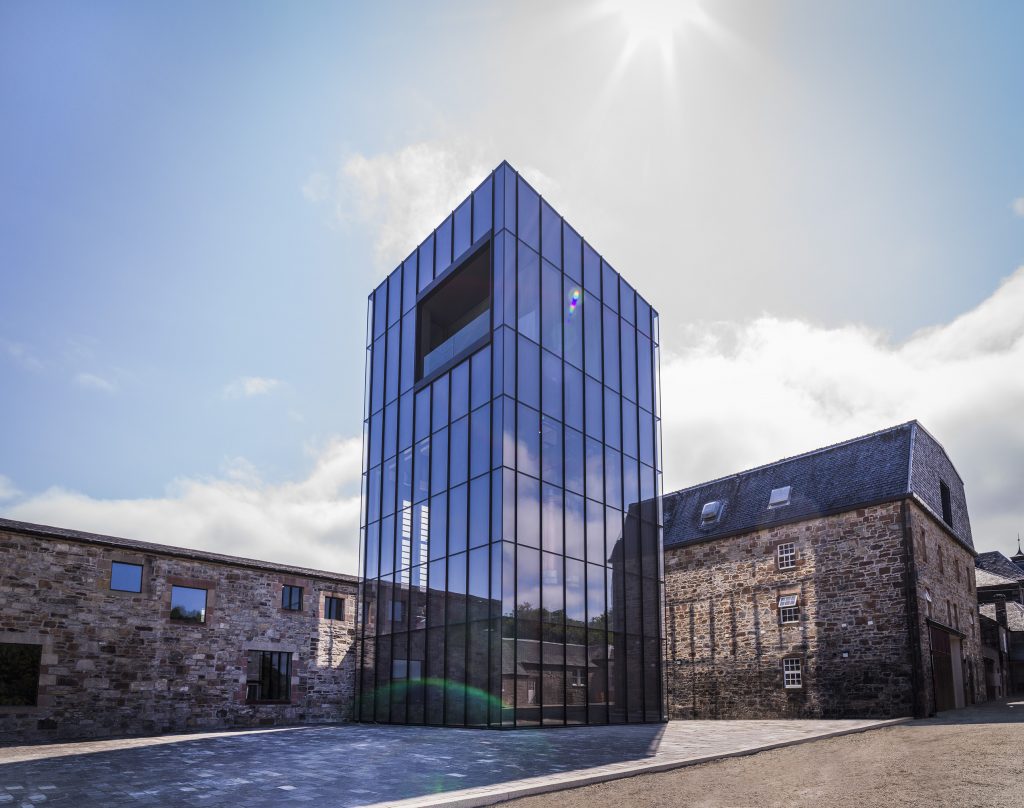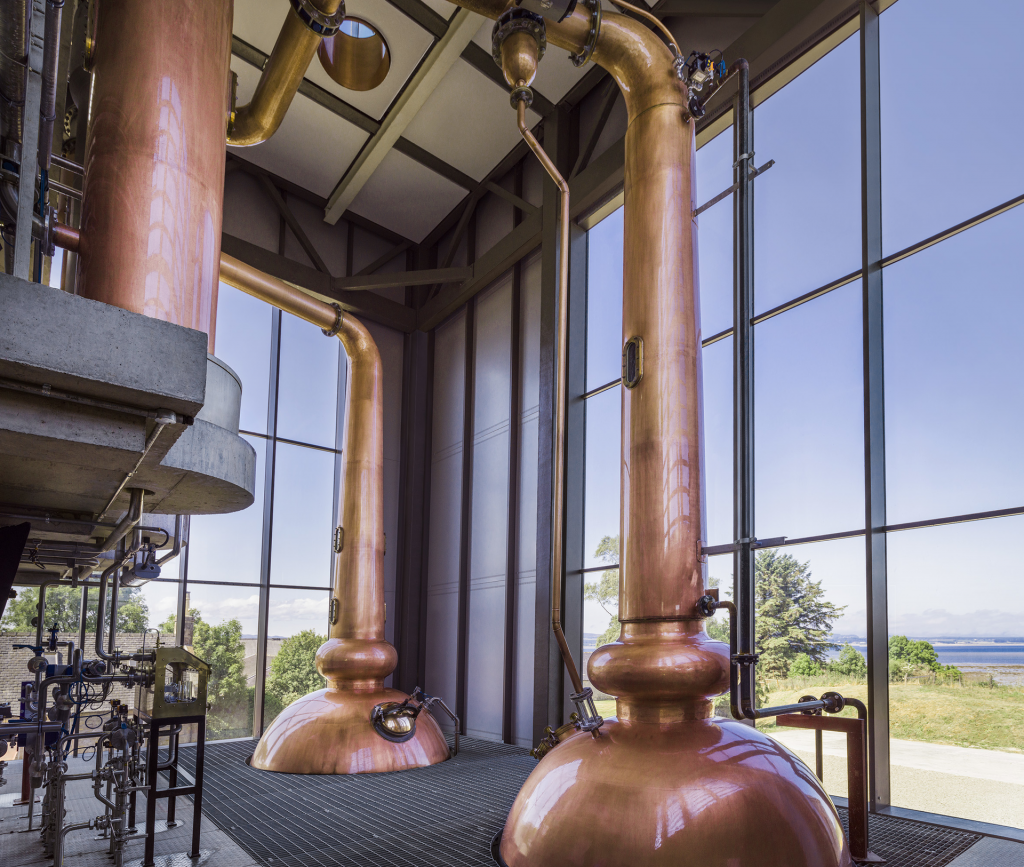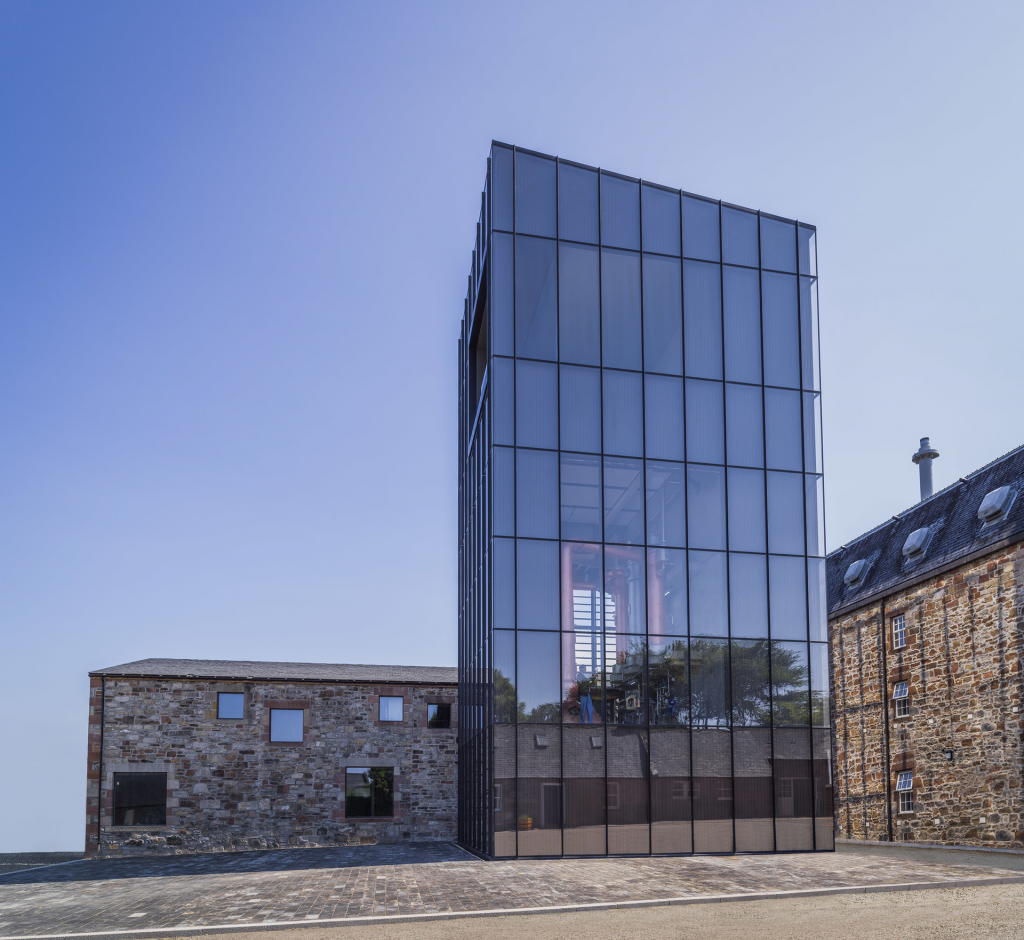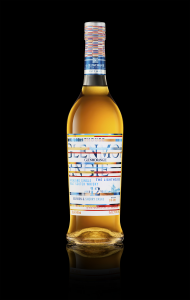September Scotch: Inside Glenmorangie’s Lighthouse Experimental Whisky Lab
Our look into the single malt scotch brand’s intriguing new closed-door facility

Designed by the Franco-Uruguayan architecture practice Barthélémy Griño, Glenmorangie‘s brand new 20-meter-tall glass tower—called The Lighthouse—rises from the grounds of their 178-year-old distillery in the Scottish Highlands. Its highest floor, a sensory experimentation lab, features an open-air balcony that yields uninterrupted views of the Dornoch Firth—a coastal inlet where the acclaimed single malt scotch brand recently repopulated 20,000 oysters in a replenishing initiative known as DEEP. From this eagle-eye vantage, within what’s soon to become an entirely closed-door facility, Dr Bill Lumsden—the mystifying, magical director of distilling, whisky creation and whisky stocks at Glenmorangie (and Ardbeg)—shared wisps of what to expect from the mirror-like innovation beacon and the beloved brand moving forward.

“It’s the best possible manifestation of the original dream I had,” Lumsden tells us. “The fact that The Lighthouse has been [visually] designed in this way, that wasn’t part of my original dream, but I love the fact that it is like this. It’s far more striking. It lends to the intrigue.” Though the distillery includes a visitors’ center and typically welcomes thousands of guests for tours annually (though, not at present), The Lighthouse will remain sealed to staff only. Inside, Lumsden, who is often referred to as the Willy Wonka of scotch (for good reason), will tinker and toil and lead the quest for unexpected new liquids.

Lumsden’s efforts will be grounded in state-of-the-art equipment, most notably two eight-meter-tall copper pot stills (one of which bares an uncommon cooling sleeve). Much like their shiny siblings in the historic portion of the distillery, these new stills have very long necks—an attribute that led to their nickname as the giraffes (and the adoption of giraffes in the brand imagery).
“For me, it was a revelation,” Thomas Moradpour, president and CEO of The Glenmorangie Company, tells us. “Taking in the view from the top of the experimentation lab, it gives you a sense of place in a new way.” Moradpour hopes that these new tools equip Lumsden in ways no one else could ever envision; that it enables his pioneering spirit. In a tremendous show of faith, he’s not setting financial quotas or asking questions about new product releases.
 “Bill likes his secrets,” Moradpour adds with a smile. “This place is a manifestation of the trust that exists in this company between the CEO and the creator. This is a pattern you see across LVMH [parent of The Glenmorangie Company]. We built it to provide a creator with a tool to be creative. Good things will happen after that.”
“Bill likes his secrets,” Moradpour adds with a smile. “This place is a manifestation of the trust that exists in this company between the CEO and the creator. This is a pattern you see across LVMH [parent of The Glenmorangie Company]. We built it to provide a creator with a tool to be creative. Good things will happen after that.”
This faith—and the need for experimentation in the strictly regulated and highly competitive single malt scotch category—acts as the foundation for The Lighthouse.
As for what they’ll produce in The Lighthouse, Lumsden avoids longterm specifics—they’ll start with a small run of new make (un-aged spirit) for the brand’s flagship 10 Year Old, to see how it turns out—and then they’ll explore the very definition of scotch whisky. This should cause a pattering in the hearts of whisky fans, as Lumsden’s impact upon the industry—through his 27 years with Glenmorangie, and even his time before at a competitor—includes the expansion of rare cask finishing, the development of signature Glenmorangie yeast and the creation of the brand’s top-of-the-line Signet expression. Regardless, it’s unlikely anyone outside of the company will taste liquid produced there for at least another decade.

“There were a number of things I wanted to do in the main distillery and it was just impossible,” Lumsden continues. “I can now do that. I am talking about different raw materials here. This answer might upset my colleagues, but as far as I am concerned, The Lighthouse as you see it is not complete. This is stage one. I can see this being expanded and changed. I have real ideas for what I’d like to go in there but that’s a few years in the future.”

The value of a closed facility does more than allude to a Wonka-like proprietary protection. “Every visitor goes down to the site and states at The Lighthouse,” Lumsden says. “As well as being a facility that allows me to create products, it is also something that brings a sense of wonder to people. That’s equally important. If we expose it completely, then there’s no more mystery left. It’s a part of the heritage of the brand to have this wonderment.”
 When visits resume, guests will be able to access The Lighthouse in one rather delicious way that ties into its design. The Lighthouse is not all glass and concrete; wood derived from the staves of bourbon and sherry Glenmorangie casks runs up the facade. The liquid from those casks now comprises an enchanting site-only limited edition release called Lighthouse, of which there will only be 4,782 bottles.
When visits resume, guests will be able to access The Lighthouse in one rather delicious way that ties into its design. The Lighthouse is not all glass and concrete; wood derived from the staves of bourbon and sherry Glenmorangie casks runs up the facade. The liquid from those casks now comprises an enchanting site-only limited edition release called Lighthouse, of which there will only be 4,782 bottles.
“What brings all these products alive to me, the company and the consumers, is not that it [The Lighthouse expression] is a delicious 12-year-old liquid but that there’s a story behind it. It wasn’t a coincidence. There was planning. To have a product that came from part of the fabric of the building is magical to me. I’ve never done anything like that before.” He adds that the cask selection let him try something he intended to do for a long time–and it’s only a first step on a journey to a whisky that he’s dreamed of making. “It’s a prototype for a new product that’s in my head and in the warehouses but it’s not out there yet,” he says.

“Whisky is not an information extraction business,” Lumsden concludes. “You have a gut feeling. The day I don’t have something to surprise people with, I should pack it in.” From The Lighthouse to the ebullient, eccentric Glenmorangie House (a nine-room guest house, recently renovated by Russel Sage Studio London, that’s a ten-minute drive down the road, along the Highland coast), Lumsden fills our time together with surprising quips and a characteristic fascination with flavor. It becomes evident that Lumsden is as much a whisky-world lighthouse himself as he is the keeper of Glenmorangie’s Lighthouse.
Images courtesy of Glenmorangie












